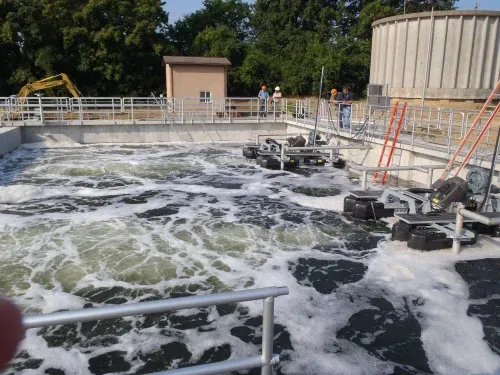What are the Functions of SBR Technology in STP Plant?
STP Manufacturer

What are the Functions of SBR Technology in STP Plant?
Sequential Batch Reactor (SBR) technology is an advanced and versatile method of wastewater treatment. It is widely used in municipal and industrial applications for the removal of contaminants and pollutants from wastewater. The SBR system operates in a batch-wise manner, with distinct phases that allow for precise control of the treatment process.
Functions of SBR Technology in sewage Treatment Plant:
Biological Treatment: SBR systems use microorganisms to break down and remove organic matter, pathogens, and other contaminants from wastewater. During the aeration phase, microorganisms consume and digest these pollutants, resulting in cleaner water.
Aeration: SBR technology includes dedicated aeration phases to introduce oxygen into the wastewater. Aeration promotes the growth of aerobic bacteria, which are essential for the biological treatment process.
Settling and Separation: After the aeration phase, the wastewater is allowed to settle, allowing the activated sludge (microorganisms) to settle to the bottom. Clear water, known as the supernatant, rises to the top and is typically discharged or subjected to further treatment.
Decanting: The clear, treated water at the top of the reactor is decanted or removed during a specific phase, leaving behind the concentrated sludge and a portion of treated water.
Dewatering: The concentrated sludge collected at the bottom is often subjected to dewatering processes to reduce its water content, making it easier to handle and dispose of.
Nutrient Removal: In addition to organic matter, SBR systems can be configured to remove nutrients such as nitrogen and phosphorus from wastewater. This is crucial for preventing water pollution and eutrophication of natural water bodies.
Disinfection: Depending on the specific requirements, SBR technology can include a disinfection phase where chlorine or other disinfectants are added to ensure that the treated effluent is safe for discharge into the environment or for reuse.
Flexible Operations: SBR systems offer flexibility in terms of timing and sequence. Operators can adjust the timing of aeration, settling, and decanting phases to optimize treatment based on influent variations and specific treatment objectives.
How Does an STP SBR Technology Works?
Fill: In this phase, wastewater is introduced into the SBR tank. The tank is filled with influent wastewater, and the treatment process begins.
Biological Treatment: During this phase, the influent wastewater undergoes biological treatment. Microorganisms in the system break down organic matter and other contaminants in the wastewater. Aeration is often used to provide oxygen for the microorganisms, promoting their growth and enhancing the treatment process.
Settling: After the biological treatment phase, the system is allowed to settle. This phase allows the activated sludge (microorganisms and suspended solids) to settle to the bottom of the tank.
Decant: In the decant phase, the clear, treated water at the top of the tank is carefully removed or decanted. This water, known as the supernatant, is typically discharged or subjected to further treatment.
Idle: Following the decanting phase, the SBR tank remains idle, preparing for the next cycle. The idle phase can include tasks like sludge wasting, which removes excess biomass, and may also serve for denitrification or phosphorus removal.
SBR technology offers several advantages, including precise control over the treatment process, adaptability to varying influent conditions, and the potential for nutrient removal. It is particularly effective in the removal of organic matter, suspended solids, and contaminants, making it a valuable tool in wastewater treatment for industries and municipalities aiming to meet stringent water quality standards and environmental regulations.
Overall, STP SBR technology is known for its adaptability and effectiveness in treating wastewater, making it a popular choice in various industrial, municipal, and environmental applications. Its functions are designed to efficiently remove contaminants and improve the quality of wastewater before it is discharged or reused.
